SUMMARY
This is AI generated summarization, which may have errors. For context, always refer to the full article.
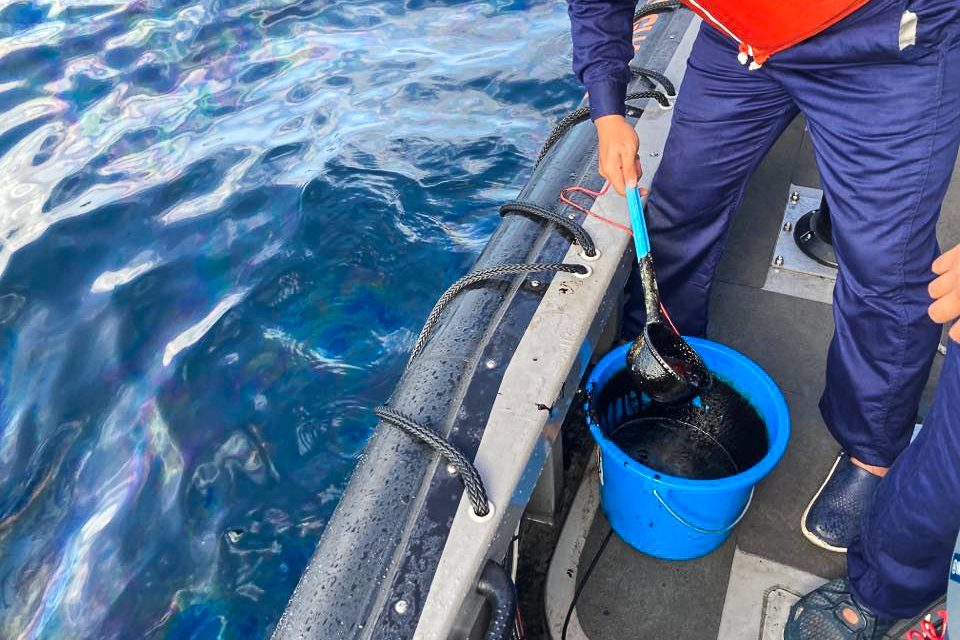
MANILA, Philippines – A French agency specializing in accidental water pollution has found that samples of spilled oil taken from Oriental Mindoro are the same as the “representative samples” gathered from a San Miguel subsidiary’s tank in Limay, Bataan, where the oil tanker MT Princess Empress was filled with over 800,000 liters of industrial fuel oil (IFO), also called “black oil.”
The Philippine Coast Guard (PCG) on Monday, April 17, posted the findings on the “fingerprinting results” of the oil samples that were sent to Cedre or the Center for Documentation, Research and Experimentation on Accidental Water Pollution based in France. An expert from Cedre was in Oriental Mindoro in March to help in the response operations.
“The said report indicated that the oil samples collected at sea in the direct vicinity of the sunken MT PRINCESS EMPRESS showed a positive match to that of the samples collected from the shorelines of Pola, Oriental Mindoro, and to the samples collected from the loading station,” the PCG post reads.
This analysis confirms that the oil samples could not have come from any other source other than from the MT Princess Empress, which sank on February 28 off Naujan, Oriental Mindoro. Oil can come from various sources and “oil fingerprinting” is needed to assess its compounds and toxicity, according to Hernando Bacosa, an environmental scientist with the Mindanao State University-Iligan Institute of Technology. This is also important for the long-term rehabilitation of the areas damaged by the oil spill.
Cedre sent its “analysis report” to the PCG on Friday, April 14.
“Cedre compared the samples collected on the shoreline to two reference oils considered representative of the fuel onboard MT PRINCESS EMPRESS before the accident – the first oil sample collected at sea in the direct vicinity of the wreck, and the second sample gathered from the tank of SL Harbor Bulk Terminal in Limay, Bataan, where the vessel acquired its Industrial Fuel Oil (IFO),” the Coast Guard post says.
“…the oil collected in the station where the tank of the ill-fated vessel was filled represents the oil contained in the ship at the moment of the accident,” it adds.
MT Princess Empress, owned by RDC Reield Marine Services, was carrying 800,000 liters of IFO, most of which is believed to have already spilled or leaked in the waters off Oriental Mindoro, Batangas, Palawan, and Antique.
The PCG’s recent post on its official page is the second official confirmation of the role of SL Harbor Bulk Terminal in the oil spill in Mindoro.
Why this is important
Previously, regulator Maritime Industry Authority (MARINA) and the PCG merely confirmed that MT Princess Empress left the private port SL Harbor Bulk Terminal in Limay, Bataan, but could not provide any other information.
This latest information disclosed by the PCG, however, is more important than the revelation that MT Princess Empress left the SL Harbor Terminal. It confirms that the ship was not transiting the port but that the IFO it was carrying came from the tanks of SL Harbor Bulk Terminal Corporation.
This would buttress the view that the charterer of the vessel was also the San Miguel subsidiary. SL Harbor Bulk Terminal Corporation is a registered oil importer and bulk distributor.
SL Harbor Bulk Terminal is operated by SL Harbor Bulk Terminal Corporation, a subsidiary of San Miguel Lighterage and Shipping Corporation. This company handles the shipping needs of the Philippines’ largest diversified conglomerate, San Miguel Corporation.
Rappler reported on March 13 that SL Harbor Bulk Terminal Corporation was the charterer of MT Princess Empress. The owner of MT Princess Empress, RDC, has refused to confirm or deny this, citing its non-disclosure agreement.
San Miguel Corporation president and CEO Ramon Ang has also neither confirmed nor denied the Rappler report. On March 31, Ang merely said that his company is just one of the clients of RDC for shipping oil. He declined to name the others.
The PCG said Cedre used Gas Chromatography-Mass Spectrometry (GCMS) in “Scan and SIM modes to examine different compounds.”
“Scan mode provides a general view of the sample’s patterns and is used as a screening method, while the SIM mode enables reliable comparisons based on various families of compounds,” the Coast Guard said.
“Results of the comparison showed that no significant difference could be demonstrated between the various samples.”
The French embassy in Manila said last month that France financed the visit of a French expert, Mikaël Laurent, to support the oil spill response operations.
Laurent was in the Philippines from March 16 to 29 on behalf of Cedre. He provided advice on clean-up operations, particularly on deployment of oil containment booms and recovery of pollutants, which improved the speed of pumping pollutants on board two tugs deployed in Oriental Mindoro, the embassy said.
According to the embassy, this was part of France’s “long-term support for the protection of the environment and diversity in the Philippines.”
Not liable but…
Although a charterer is not liable for oil pollution under the Oil Pollution Compensation Act of 2007, it may be sued in relation to other environmental laws, according to organizations such as Greenpeace Philippines, Oceana, Centre for Environment and Energy Development, and Protect Verde Island Passage (VIP). They also believe the charterer should own up to the spill and help in the clean-up and long-term rehabilitation.
Some of these organizations have pending requests with government agencies for information on the oil spill, and have criticized the government for lack of transparency.
In the 2006 Guimaras oil spill, Petron Corporation, the charterer of the sunken MT Solar 1, was found liable by the Special Board of Marine Inquiry for overloading the tanker with IFO. Petron, which was then owned by Saudi Aramco, has appealed this administrative ruling with the Department of Transportation.
Two civil cases filed by citizens in Guimaras against Petron and the shipowner, Sunshine Maritime Development Corporation, are also still pending before the trial courts.
Petron is now owned by San Miguel Corporation. It owns the largest petroleum refinery complex located in Bataan, where it has bulk fuel terminals.
The PCG has said that MT Princess Empress was not overloaded. A Senate probe last March on the oil spill found that MT Princess Empress was “colorum” or operating without a valid updated license. A separate investigation by the Department of Justice (DOJ) found that MT Princess Empress was not brand new as indicated in official documents.
Regulator MARINA has suspended the operations of RDC and has filed an administrative complaint against the shipowner for operating without a valid permit.
MT Princess Empress left Limay, Bataan on February 28 but encountered big waves and strong winds and sank later that day. A report by the Department of Social Welfare and Development (DSWD), which is providing food packs to families affected by the oil spill, also said that “the vessel experienced engine trouble brought by overheating while in transit from the Province of Bataan to the Province of Iloilo, causing it to drift towards Balingawan Point in Naujan.”
Oriental Mindoro is bearing the brunt of the environmental damage, and the oil spill has also reached the Verde Island Passage, a body of water in Batangas and Mindoro that is a global center of marine shorefish biodiversity.
As of April 16, 37,871 families or nearly 180,000 people in 187 barangays or villages in Oriental Mindoro, Batangas, Palawan, and Antique have been affected by the fishing bans and the oil spill’s negative impact on tourism.
The insurers of RDC as well as international organizations mandated to help member-states faced with an oil spill have started the process of collecting insurance claims from those who have suffered from economic losses, a process that is expected to take several months. – Rappler.com
Add a comment
How does this make you feel?
![[ANALYSIS] Tips for lawmakers probing the Oriental Mindoro oil spill](https://www.rappler.com/tachyon/2023/04/20230404-tips-probing-mindoro-oil-spill.jpg?fit=449%2C449)





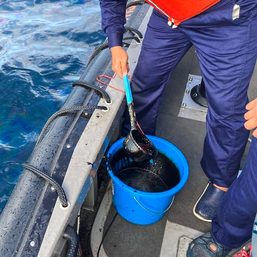




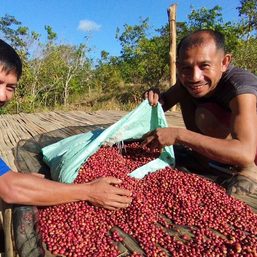
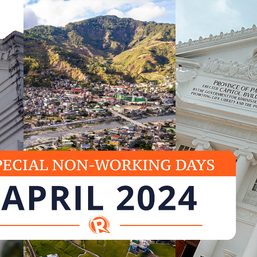
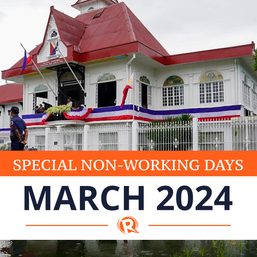
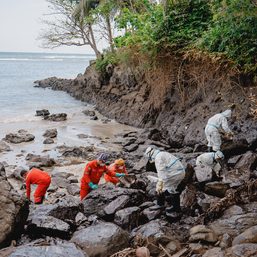
There are no comments yet. Add your comment to start the conversation.